Complete Solutions to PHYSICS of chapter THERMODYNAMICS of Class 11 book with complete answers and questions
| Class 11 | PHYSICS |
| Chapter | THERMODYNAMICS |
| DISHA | PHYSICS |
| Number Of Questions | 44 |
| Academic Year | 2023-24 |
The relation between internal energy `U`, pressure `P` and volume `V` of a gas in an adiabatic process is
`U = a + bPV` where a and b are constants. What is the effective value of adiabatic constant `gamma` ?05:35View SolutionCarbon monoxide is carried around a closed cyclic processes `abc`, in which `bc` is an isothermal process, as shown in Fig. The gas absorbs `7000 J` of heat as its temperature is increased from `300 K` to `1000 K` in going from `a` to `b`. The quantity of heat ejected by the gas during the process `ca` is
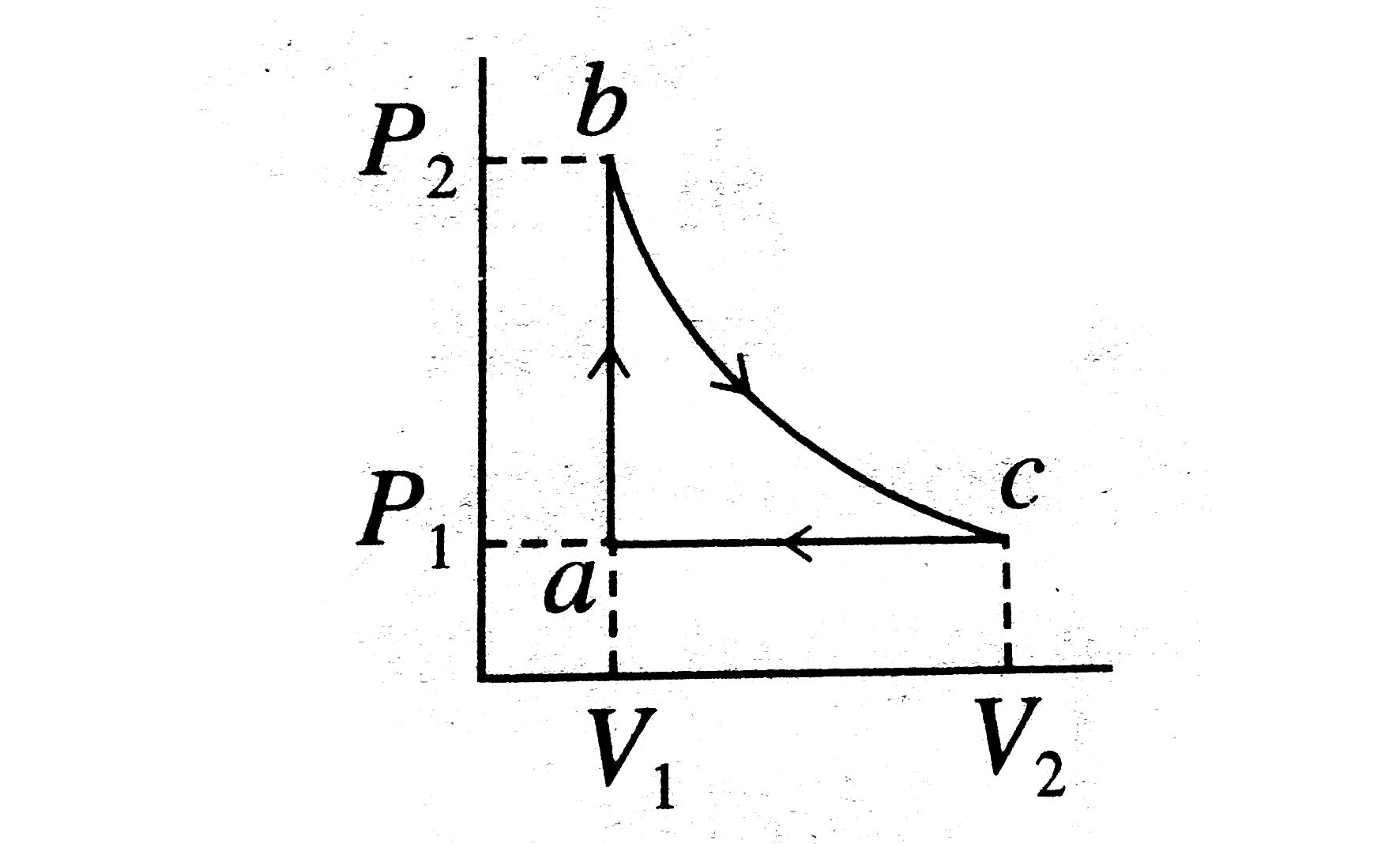 02:49View Solution
02:49View SolutionA Carnot engine, having an efficiency of `eta=1//10` as heat engine, is used as a refrigerator. If the work done on the system is 10J, the amount of energy absorbed from the reservoir at lower temperature is
01:53View SolutionIn a thermodynamic process, pressure of a fixed mass of a gas is changed in such a manner that the gas release `20 J` of heat and `8 J` of work is done on the gas. If initial internal energy of the gas was `30 J`, what will be the final internal energy?
02:02View SolutionA closed gas cylinder is divided into two parts by a piston held tight. The pressure and volume of gas in two parts respectively are (P, 5V) and (10P, V). If now the piston is left free and the system undergoes isothermal process, then the volumes of the gas in two parts respectively are
08:11View SolutionA mass of diatomic gas`(gamma=1.4)` at a pressure of 2 atomphere is compressed adiabitically so that its temperature rises from `27^(@)C` to `927^(@)C`. The pressure of the gas in the final state is
03:21View SolutionA diatomic ideal gas is used in a Carnot engine as the working substance. If during the adiabatic expansion part of the cycle the volume of the gas increase from V to 32V, the efficiency of the engine is
02:37View SolutionThe P-V diagram of a gas system undergoing cyclic process is shown here. The work done during isobaric compression is
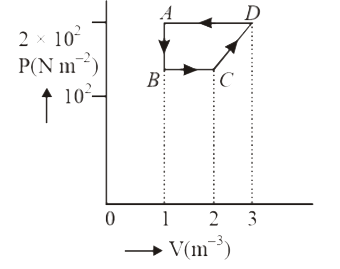 01:04View Solution
01:04View SolutionDuring an adiabatic process of an ideal gas, if P is proportional to `(1)/(V^(1.5)`, then the ratio of specific heat capacities at constant pressure to that at constant volume for the gas is
00:51View SolutionThe work of 146 kJ is performed in order to compress one kilo mole of a gas adiabatically and in this process the temperature of the gas increases by `7^@C`. The gas is `(R=8.3ml^-1Jmol^-1K^-1)`
02:39View SolutionConsider a spherical shell of radius R at temperature T. The black body radiation inside it can be considered as an ideal gas of photons with internal energy per unit volume `u=U/V propT^4` and pressure `P=1/3(U/V)`. If the shell now undergoes an adiabatic expansion the relation between T and R is :
03:08View SolutionThe specific heat capacity of a metal at low temperature (T) is given as
`C_(p)(kJK^(-1) kg^(-1)) =32((T)/(400))^(3)`
A 100 gram vessel of this metal is to be cooled from `20^(@)K` to `4^(@)K` by a special refrigerator operating at room temperaturte `(27^(@)C)` . The amount of work required to cool the vessel is06:54View Solution5.6 liter of helium gas at STP is adiabatically compressed to 0.7 liter. Taking the initial temperature to be `T_1,` the work done in the process is
04:02View SolutionFour curves `A, B, C` and `D` are drawn in Fig. for a given amount of gas. The curves which represent adiabatic and isothermal changes
 01:51View Solution
01:51View SolutionIn a adiabatic process pressure is increased by `2//3%` if `C_(P)//C_(V) = 3//2`. Then the volume decreases by about
01:35View SolutionA reversible engine converts one-sixth of the heat input into work. When the temperature of the sink is reduced by `62^@C` , the efficiency of the engine is doubled. The temperatures of the source and sink are
05:16View SolutionA diatomic ideal gas is compressed adiabatically to 1/32 of its initial volume. If the initial temperature of the gas is `T_i` (in Kelvin) and the final temperature is a `T_i`, the value of a is
02:44View SolutionWhen the state of a gas adiabatically changed from an equilibrium state A to another equilibrium state B an amount of work done on the stystem is 35 J. If the gas is taken from state A to B via process in which the net heat absorbed by the system is 12 cal, then the net work done by the system is (1 cal = 4.19 J)
01:45View SolutionCalculate the work done when one mole of a perfect gas is compressed adiabatically. The initial pressure and volume of the gas are `105 N//m^2` and 6 litres respectively. The final volume of the gas are 2 litre. Molar specific heat of the gas at constant volume is `3R//2`.
05:44View SolutionAn ideal Carnot's engine whose efficiency 40% receives heat of 500K. If the efficiency is to be 50% then the temperature of sink will be
01:51View SolutionOne kg of water at `373K` is converted into steam at the same temperature. The volume `1 cm^(3)` of water becomes `1671 cm^(3)` on boiling. Calculate the change in internal energy of the system , if heat of vaporisation is `540 cal g^(-1)`. Given standard atmospheric pressure `=1.013xx10^(5) Nm^(-2)`.
02:49View SolutionOne mole of an ideal gas at temperature T was cooled isochorically till the gas pressure fell from P to `(P)/(n)`. Then, by an isobaric process, the gas was restored to the initial temperature. The net amount of heat absorbed by the gas in the process is
01:59View SolutionA Carnot engine, having an efficiency of `eta=1//10` as heat engine, is used as a refrigerator. If the work done on the system is 10J, the amount of energy absorbed from the reservoir at lower temperature is
01:53View SolutionOne litre of ideal gas is conpressed isothermally at 0.72m of Hg-column so that its volume becomes 0.9 litre. Find its stress, if the mercury is `13.6 xx 10^(3) kg//m^(3)`.
03:10View SolutionAn ideal gas is taken through the cycle `AtoBtoCtoA,` as shown in the figure, If the net heat supplied to the gas in the cycle is 5J, the work done by the gas in the process CtoA is
 02:28View Solution
02:28View SolutionAn ideal gas undergoing adiabatic change has the following pressure-temperature relationship
01:20View SolutionIn a thermodynamic process, pressure of a fixed mass of a gas is changed in such a manner that the gas release `20 J` of heat and `8 J` of work is done on the gas. If initial internal energy of the gas was `30 J`, what will be the final internal energy?
02:02View SolutionThe cofficient of performance of a refrigerator is 5. If the temperature inside freezer is `-20^(@)C`, the temperature of the surroundings to which it rejects heat is :
02:07View SolutionTwo gases have the same initial pressure, volume and temperature. They expand to the same final volume, one adiabatically and the other isothermally
08:32View Solution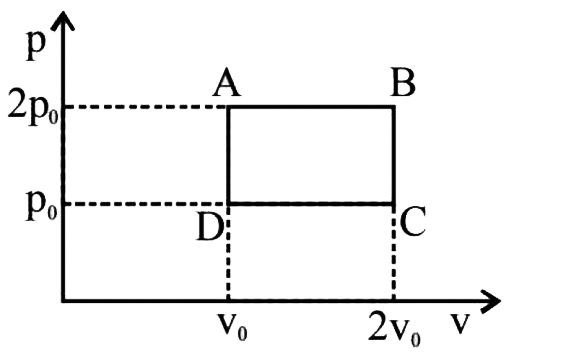
The above p-v diagram represents the thermodynamic cycle of an engine, operating with an ideal monoatomic gas. The amount of heat, extracted from the source in a single cycle is03:56View SolutionFor an ideal gas graph is shown for three processes. Process 1, 2 and 3 are respectively
 01:34View Solution
01:34View SolutionDuring an adiabatic process an object does 100J of work and its temperature decreases by 5K. During another process it does 25J of work and its temperature decreases by 5K. Its heat capacity for `2^(nd)` process is
01:48View SolutionA refrigerator works between `4^(@)C` and `30^(@)C`. It is required to remove `600 calories` of heat every second in order to keep the temperature of the refrigerator space constant.The power required is (Take `1calorie= 4.2 J`)
02:08View SolutionA perfect gas goes from a state A to another state B by absorbing 8 × 105 J of heat and doing 6.5 × 105 J of external work. It is now transferred between the same two states in another process in which it absorbs 105 J of heat. In the second process
00:58View SolutionOne mole of a diatomic ideal gas undergoes a cyclic process ABC as shown in figure. The process BC is adiabatic. The temperature at A,B and C are 400K, 800K and 600K respectively. Choose the correct statement:
 02:58View Solution
02:58View SolutionTwo Carnot engines A and B are operated in series. The engine A receives heat from the source at temperature `T_1` and rejects the heat to the sink at temperature T. The second engine B receives the heat at temperature T and rejects to its sink at temperature `T_(2)`. For what value of T the efficiencies of the two engines are equal?
01:10View SolutionAn ideal gas is initially at `P_1,V_1` is expands to `P_2,V_2` and then compressed adiabatically to the same volume `V_1` and pressure `P_3.` If W is the net work done by the gas in complete process which of the following is true.
03:31View SolutionWhich of the following statements is correct for any thermodynamic system
02:44View SolutionOne mole of an ideal gas goes from an initial state A to final state B via two processs : It first undergoes isothermal expansion from volume `V` to `3 V` and then its volume is reduced from `3 V` to `V` at constant pressure. The correct `P-V` diagram representing the two process in (figure)
01:54View SolutionA sample of an ideal gas in a cyclinder is compressed adiabatically to `1/3rd` of its volume. Will final pressure be more or less than `3 times` the initial pressure?
01:38View SolutionA gas is compressed isothermally to half its initial volume. The same gas is compressed separately through an adiabatic process untill its volume is again reduced to half. Then
03:02View SolutionAn ideal gas goes from State A to state B via three different process as indicate in the `P-V` diagram.
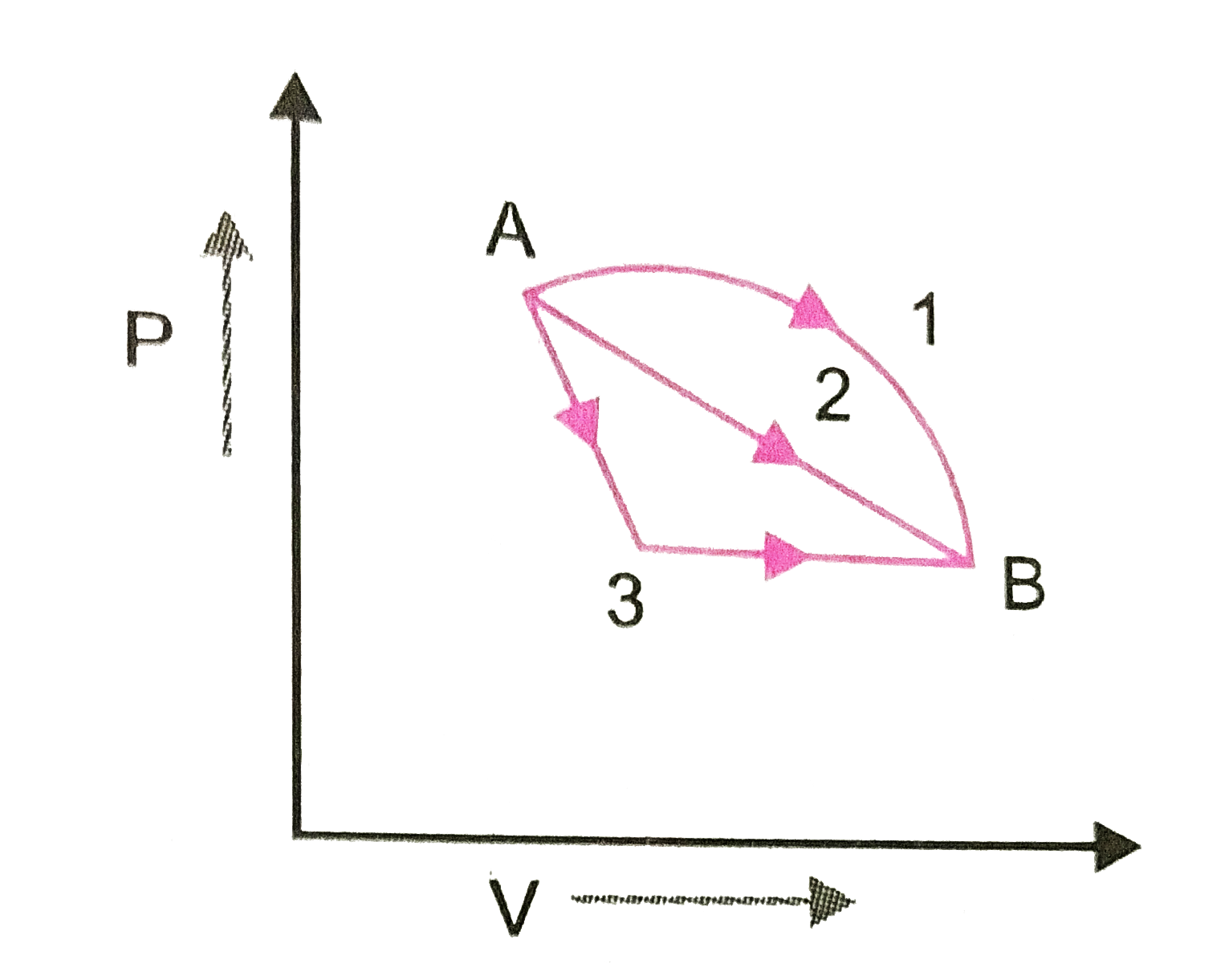
If `Q_(2), Q_(3)` indicates the heat absorbed by the gas along the three processes and `DeltaU_(1), DeltaU_(2), DeltaU_(3)` indicates the change in internal energy along the three processes respectively, then02:39View SolutionIn the `P-V` diagram shown in figure `ABC` is a semicircle. The work done in the process `ABC` is
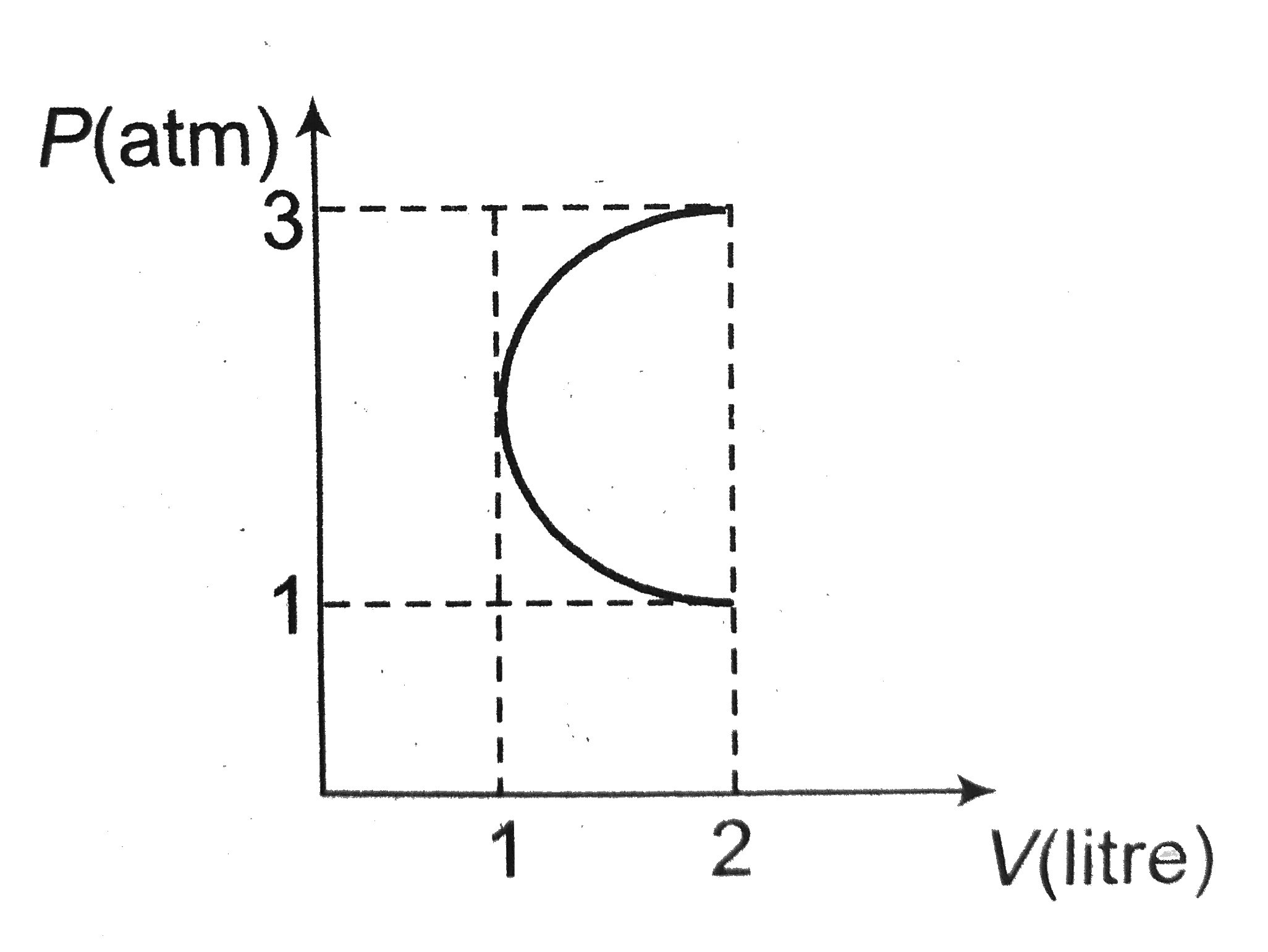 04:30View Solution
04:30View SolutionFor an isothermal expansion of a perfect gas, the value of `(DeltaP)/(P)` is
01:26View Solution
PHYSICS questions and complete solutions for chapter THERMODYNAMICS of DISHA PHYSICS (HINGLISH) of Class 11
